 |
| Photo by Dylan Klinesteker |
But those who live or travel in the burned areas won't soon forget. And with climate models that show a warmer and drier Pacific Northwest in the decades ahead, many are concerned about the future.
In late August this year, those of us who love the North Cascades Institute Environmental Learning Center (ELC) were glued to FaceBook, Twitter, and other media for news of its fate. We were desperately hoping that this wonderful place would be spared from the swift-moving Goodell Fire in the Skagit River Gorge.
It was definitely touch and go.
At one point the ELC was under a 30-minute evacuation order as the quick-moving fire raged up the steep mountainsides rimming the gorge toward the campus. ELC staff were told there was a 75 percent chance that the learning center would be affected.
According to Program Manager Katie Roloson, who
stayed at the ELC and had a boat loaded and ready for retreat onto Diablo Lake if necessary, they were informed that the
fire would likely reach the ELC in less than a day. Fortunately the fire slowed down a bit, and fire crews arrived to do more protective measures (e.g., run hoses all around).
 |
| Highway 20 just outside Newhalem. Photo by Dylan Klinesteker. |
But then the rains came, over 4.5 inches in a few days. As Timothy Egan characterized our region, "a Good Rain" saved the day. Heavy rain suppressed the fire and saturated the drought-parched moss and understory plants that contributed to the spreading fire.
 |
| Understory plants and trees like vine maples left the ELC vulnerable to fire. |
 |
| Smoke from Goodell Fire hot spot above Newhalem, October 2015. |
Dylan, who watched the fire in its early stages near Newhalem before it "blew up" on August 19, tells us the wind acted like billows and sent the fire on a rampage.
"In 30
minutes the fire blew across the whole mountainside just across the highway
from the town of Newhalem, then jumped the highway behind the [Seattle City Light] powerhouse.
It jumped from 800 to 2,000 acres in a day," said Dylan, "and ultimately grew to 7,000 acres."
The Skagit River from Newhalem up to Ross Lake is tamed by three dams owned and operated by Seattle City Light. These dams supply Seattle with 20 percent of its total supply of hydropower electricity. During the fire, all the power up here was turned off, and the City lost some power lines.
 |
| Lake Diablo, Diablo Dam, and power lines. The Goodell Fire burned up the mountains on the right side of photo to the highest peak on the right (in the sun). |
"The mosaic burn
pattern you see on the mountainsides has a lot to do with the intensity of the fire. Some areas
were completely stripped of vegetation. Embers from the fire flew and ignited other areas.
Embers can travel miles," Dylan explained. "And if a fire starts at the top of a steep ridge, a burning log can roll down hill and spread
fire below, which is what happened in the Skagit River Gorge."
While it looks bleak up there, Dylan said that Douglas firs can be 40 percent scorched and survive. (On the east side of the Cascades, ponderosa pines can burn 90 percent and survive.)
 |
| Dylan Klinesteker discussing the Goodell Fire. |
"People see all this damage and think it’s ugly. Good can come of it," naturalist Becky List told us.
"A
healthy forest has a diversity of trees. For example, under Douglas fir grow western hemlock, which can take over and choke out firs. Fire clears out
hemlocks and lets the firs grow, " Becky explained. "Fire kills pests and bacteria and puts minerals back into the soil.
Where the fire hung out longer, recovery may take longer because it also kills good
things in soil, like fungus."
 | ||
| Where the fire began from lightning strike. |
 |
| Early burning. Photo by Dylan Klinesteker. |
We park just outside the entrance to the closed campground, which was threatened and partially burned by the fire, and walk over a bridge across the Skagit River. Looking down into the river, we
see clusters of pink salmon hanging in the sandy shallows. Dylan
spots a much bigger Chinook.
"During the fire, Seattle City Light was required to keep water flowing through dams in the river for salmon, so water was running even though the power was turned off, " Dylan told us.
Amidst all the burned hillsides, it's nice to see the wild lifecycle continue.
Happy trails and thanks for visiting Pacific Northwest Seasons! And I'd love to hear in the comments below about your Northwest experiences.
In between blog posts, visit Pacific NW Seasons on FaceBook, Twitter, and Instagram for more Northwest photos and outdoors news.
When You Go
As of November 16, 2015, the North Cascades Highway (Highway 20) is now closed for the winter due to heavy snow and avalanche danger. But for the next year or so, driving through the scorched Skagit River Gorge could be somewhat hazardous. It rained hard the night before we arrived in October, and the following afternoon a big tree came down across the highway and smashed through the guardrail. Proceed with caution.
"During the fire, Seattle City Light was required to keep water flowing through dams in the river for salmon, so water was running even though the power was turned off, " Dylan told us.
Amidst all the burned hillsides, it's nice to see the wild lifecycle continue.
Happy trails and thanks for visiting Pacific Northwest Seasons! And I'd love to hear in the comments below about your Northwest experiences.
In between blog posts, visit Pacific NW Seasons on FaceBook, Twitter, and Instagram for more Northwest photos and outdoors news.
When You Go
As of November 16, 2015, the North Cascades Highway (Highway 20) is now closed for the winter due to heavy snow and avalanche danger. But for the next year or so, driving through the scorched Skagit River Gorge could be somewhat hazardous. It rained hard the night before we arrived in October, and the following afternoon a big tree came down across the highway and smashed through the guardrail. Proceed with caution.











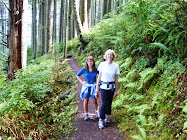

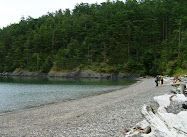
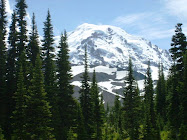






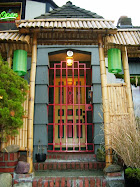


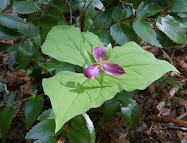

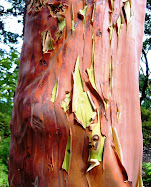

3 comments:
After the summer we had, hotter and dryer than usual, we are lucky much more damage was not done. Kudos to the firefighters for their bravery and to the many others who volunteered assistance.
An interesting book (more or less) on this topic is "The Reclaimers", discussing the use of traditional Native American technologies to address "management" of the forests. And an additional read is "1491" how things were managed before the European settlement. Seems like lots of management was happening for years. Both well worth reading. Off topic but also very interesting is "Buffalo for the Broken Heart" and interesting take on restoration of the tall grass prairie . Its raining - time to read. Enjoy, Mary Lou
Anne, yes definitely gratitude for the firefighters and volunteers. So tragic we lost a few this past year in the Methow.
Suezy, Ah, thanks for the Alabama love. Back at you.
Mary Lou, Thanks for the tips! Yea, I know the natives were managing the meadows in Yosemite via fire for eons, as I'm sure they did elsewhere. Yes, wish I could just stop and read today, perfect inside reading weather. Enjoy.
Post a Comment